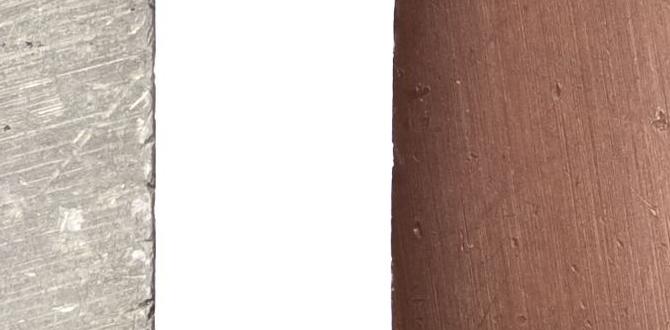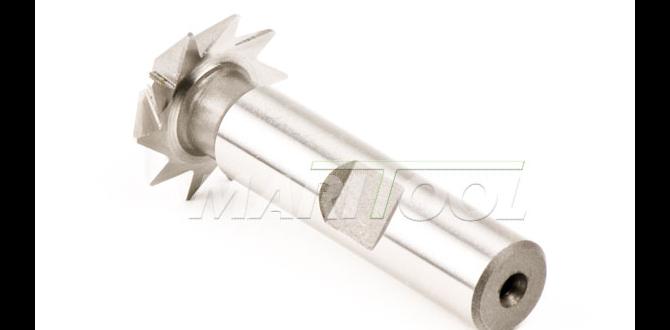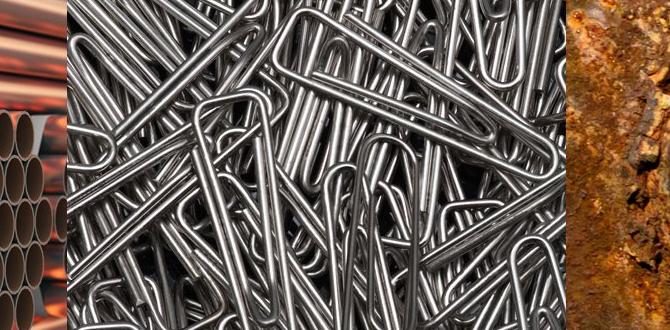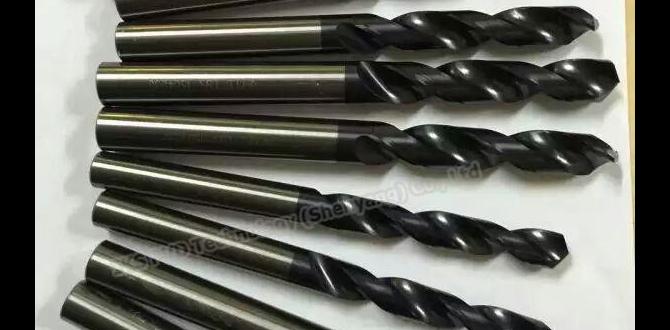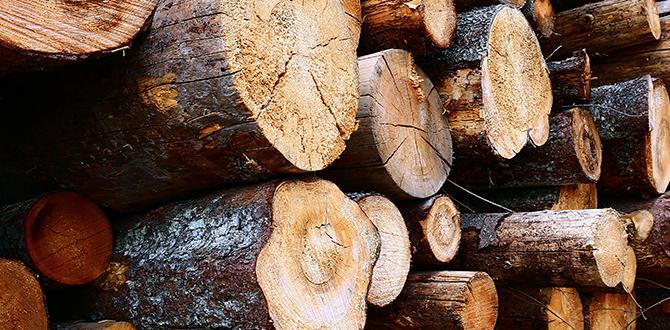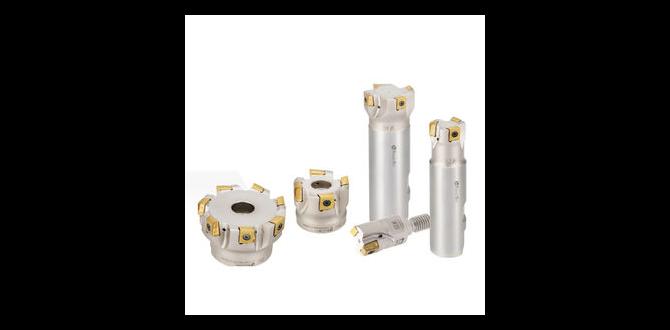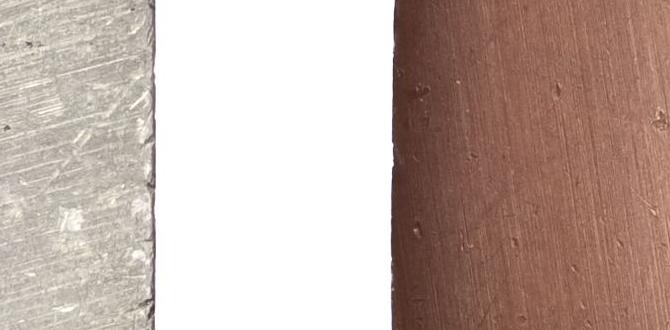Have you ever watched a woodturner in action? The spinning wood and flying shavings create a magical scene. However, chatter during wood turning can take away from that magic. It’s loud and distracting. It can ruin your beautiful piece of art. But don’t worry! You can learn how to reduce chatter in wood turning. Understanding why it happens is the first step.
Chatter shows up when tools hit the wood unevenly. It can cause bumps and wobbles on your projects. Think about this: if you’ve ever tried to draw a straight line and your pencil jumps, that’s a bit like chatter! It feels frustrating, right? This article will explore simple ways to keep your tools steady and your wood turning smooth.
Imagine creating a beautifully finished bowl or a perfectly shaped spindle with no interruptions. How amazing would that be? With the right techniques, you can bring that vision to life. Let’s dive into some effective tips that will help you conquer chatter and enjoy wood turning more than ever!
How To Reduce Chatter In Wood Turning: Tips And Techniques
Chatter in wood turning can frustrate any woodworker. To tackle this issue, use sharp tools for clean cuts. Adjusting the speed of the lathe also matters. Did you know that changing the way you hold the wood can make a big difference? Using a steady hand and proper support helps too. Lastly, check the wood grain. Working with the grain can lead to smoother results. Try these tips to enjoy a quieter turning experience!
Understanding Chatter in Wood Turning
Definition and explanation of chatter. Common causes of chatter in wood turning.
Chatter in wood turning is a rattling sound that happens when the tool bounces off the wood. It can ruin your project and make it hard to work. Common causes include:
- Poor tool sharpness: A dull tool doesn’t cut cleanly.
- Improper speed: Too fast or too slow can cause issues.
- Improper tool angle: The angle affects how the tool meets the wood.
- Wood characteristics: Some types of wood are more prone to chatter.
Understanding these causes helps you improve your wood turning skills.
What is chatter in wood turning?
Chatter is a noise caused by unsteady cutting of wood. It happens when the tool vibrates and doesn’t stay firmly in place. This can create rough surfaces on your wood piece.
Importance of Reducing Chatter
Impact on surface finish and quality. Effects on tool life and safety.
Reducing chatter is vital for wood turning. It improves surface finish and quality. A smoother surface means your projects look better. Chatter can also make tools wear out faster. This raises safety risks, as dull tools can slip and cause accidents. Paying attention to chatter helps create beautiful pieces and keeps you safe.
Why is reducing chatter important?
Reducing chatter leads to finer finishes, extends tool life, and enhances safety.
- Better surface finish
- Longer tool life
- Increased safety while working
Choosing the Right Tools and Equipment
Types of tools that minimize chatter. Importance of tool sharpness and maintenance.
Choosing the right tools is key to a smooth woodturning experience. Start with a sharp chisel or a bowl gouge. These tools work wonders to reduce chatter. Dull tools can cause major headaches; they tend to bounce rather than cut. So, keep your tools sharp and clean! Regular maintenance is like giving your tools a spa day. Remember, happy tools equal happy woodturning. Try this chart for your tool kit:
| Tool Type | Benefits |
|---|---|
| Chisels | Minimal chatter, precise cuts |
| Bowl Gouges | Great for curves and shapes |
| Parting Tools | Clean splits without fuss |
Choosing the right tools can turn your wood from a block into a masterpiece, minus the bumps! Remember, a well-cared tool is your best friend.
Optimal Lathe Setup Techniques
Proper alignment and stabilization methods. Recommended lathe speeds for different woods.
To get the best results while turning wood, you need to set up your lathe properly. First, make sure your lathe is aligned and steady. A wobbling lathe can lead to chatter faster than a squirrel in a nut factory! Next, choose the right speed for the wood you are using. Too fast, and you’ll have a shaky mess; too slow, and you might fall asleep. Here’s a handy table to help you pick the right speed:
| Wood Type | Recommended Speed (RPM) |
|---|---|
| Softwoods | 1500 – 2000 |
| Hardwoods | 1000 – 1500 |
| Exotics | 500 – 1000 |
Following these tips will help you reduce chatter and create smooth finishes. Remember, proper setup is the key to wood turning success!
Technique Adjustments During Turning
Best practices for tool angle and pressure. How to achieve consistent feed rates.
Changing the way you hold your tools can make a big difference. The right tool angle helps the wood and tool work together. If your angle is off, it’s like trying to cut bread with a spoon, impressive but not practical! Next, apply just the right amount of pressure; think of it like patting a puppy—not too rough! Keep a steady pace while turning to avoid bumps. Imagine yourself gliding like a smooth dancer! Aim for a consistent feed rate to get a lovely finish.
| Technique | Best Practice |
|---|---|
| Tool Angle | Adjust for smooth cuts |
| Pressure | Gentle but firm touch |
| Feed Rate | Consistent and steady pace |
Material Selection and Preparation
Effects of wood grain and species on chatter. Proper drying and conditioning of wood.
Choosing the right wood can make a big difference in wood turning. Different types of wood, or species, have unique grain patterns. Well-prepared wood reduces chatter. Here are key points to consider:
- Wood Grain: Straight grains work best. They help create smoother finishes.
- Species Effects: Hardwoods like maple are less prone to chatter than softwoods like pine.
- Drying Methods: Proper drying prevents warping and splits.
- Conditioning: Condition wood before turning. This helps keep it stable.
Picking and preparing your wood carefully will really improve your turning results.
How does wood grain affect chatter in wood turning?
The grain direction plays a key role in chatter. Straight grains reduce vibration and lead to better smoothness during turning.
What is the importance of drying and conditioning wood?
Properly drying and conditioning wood ensures it’s stable. This cuts down on issues such as cracks and twists.
Advanced Techniques to Minimize Chatter
Use of dampening systems and accessories. Exploring different turning methods and styles.
Wood turning can be smooth and enjoyable with a few advanced techniques. One way to reduce chatter is to use dampening systems and accessories. These tools absorb vibrations during turning. They help keep the wood steady and quiet.
You can also explore different turning methods. Here are some styles to try:
- Use a steadier rest for support.
- Work with varied speeds to find what fits your project.
- Change your tool angle for better control.
Trying these techniques can lower chatter and lead to better results in your wood turning projects.
What is a dampening system in wood turning?
A dampening system is a tool that absorbs vibrations while you turn wood. This leads to smoother cuts and less chatter during the turning process.
Maintenance and Troubleshooting
Regular lathe and tool maintenance tips. Common problems and their solutions related to chatter.
To keep your lathe in top shape, regular maintenance is essential. Check your tools often. Sharpen them to avoid chatter. Clean your lathe regularly to remove dust. Adjust your setup if you notice issues. Here are some common problems and easy fixes:
- Loose components: Tighten them to stabilize the lathe.
- Bent tools: Replace or straighten them for a smooth cut.
- Uneven wood: Shim it to reduce vibration.
These tips can help you enjoy wood turning without the nuisance of chatter.
How can I fix chatter while turning wood?
To fix chatter, ensure your tools are sharp and your wood is secure. Adjust your lathe speed and feed rate. Using a different cutting technique can also help smooth things out.
Resources for Further Learning
Recommended books, websites, and courses. Community forums and workshops for handson experience.
Many resources are available for learning more about woodturning. Here are some great options:
- Books: Look for titles by authors like John J. Letcavage or Alan L. Stratton for useful tips.
- Websites: Visit sites like Woodturning Online for helpful guides.
- Courses: Check out local community colleges or online platforms like Udemy.
- Forums: Join woodworking forums to share ideas and ask questions.
- Workshops: Attend workshops for hands-on practice with experts.
These resources can deepen your understanding of how to reduce chatter in wood turning.
What books can help with woodturning?
Books by experienced woodturners provide useful tips, tricks, and projects. Look for titles that focus on noise reduction techniques.
Conclusion
To reduce chatter in wood turning, focus on sharp tools, proper speed, and steady hands. We can also use a good lathe setup and support the wood well. Experiment with different techniques to find what works best for you. Remember, practice makes perfect! For more tips, you can read further on wood turning techniques or watch tutorial videos.
FAQs
What Are The Most Effective Techniques For Properly Mounting A Workpiece To Minimize Chatter In Wood Turning?
To stop chatter when wood turning, you can use a few smart tricks. First, make sure the wood is balanced well on the machine. You should also use strong clamps or a good faceplate to hold it tight. If you cut slowly and gently, it helps too. Finally, you can try using different tools to see which one makes a smoother finish.
How Does The Speed Of The Lathe Affect The Occurrence Of Chatter, And What Rpm Settings Are Ideal For Different Wood Types?
The speed of the lathe can cause chatter, which is a shaky sound when you’re working. If you go too fast, the tool might bounce around. To avoid this, slow down the lathe. For soft woods like pine, you can use about 1,500 to 2,000 RPM (revolutions per minute). For hard woods like oak, try 1,000 to 1,500 RPM for a smoother cut.
What Role Does Tool Selection And Tool Sharpness Play In Reducing Chatter During Wood Turning?
Choosing the right tools and keeping them sharp helps reduce chatter when you’re wood turning. Sharp tools make clean cuts, so the wood moves smoothly. If tools are dull, they can bounce and cause chatter. It’s like trying to cut paper with a dull scissors; it snags and makes a mess. Using good tools and keeping them sharp leads to better results!
How Can The Design And Shape Of The Wood Piece Impact The Likelihood Of Chatter During The Turning Process?
The design and shape of the wood piece can affect chatter, which is a shaking noise during turning. If the wood is uneven or has a lot of bumps, it might vibrate more. Smooth and balanced shapes, like a nice round bowl, help keep things steady. If you make sure the wood is well-shaped, you can reduce chatter and turn more easily.
Are There Specific Types Of Wood Or Grain Orientations That Are Less Prone To Causing Chatter When Turned?
Yes, some types of wood are better for turning. Hardwoods like maple and cherry are good choices. You should look for straight grain, which helps avoid chatter. Cutting the wood with the grain (instead of against it) can also help. This way, your project will turn out smoother!

